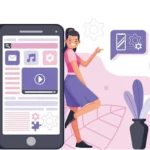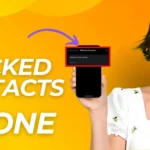Graphic designing is the most vital skill in the digital marketing field, so a non-designer should know a few tips and tricks of graphic designing.
It is a big hurdle for many writers to make their content legible and inquisitive. However, adding interactive graphics and relatable imagery can turn the tables. So, today, every writer should learn the basics of design software like Photoshop, Canva, and Illustrator.
We call this skill a hidden weapon for non-designers, as it helps them tackle all the minor design-related issues by themselves instead of hiring professional designers or requesting their designer friends. Besides, everyone can’t afford a custom logo design agency or a freelance designer.
On the other hand, learning takes time and a few dollars, making you a part-time designer. This article will give you the diamond to which you do not have to mine.
Have Command in These Photoshop Skills:
It is not necessary to master Photoshop, but you have to be familiar with the essential tools and programs like:
- Cropping, resizing, selecting an image, adding media
- Learn to layer
- Creating basic shapes like square triangles, circles, etc.
- Learn the art of blending modes and blending layers
You can learn all these skills smoothly in a few hours but don’t ignore the other skills in Photoshop. Learn them also along your learning journey!
Photoshop provides a better tool for freehand sketching. If your client has hired you to make a custom logo design, this tool will help you sketch your logos.
Learn the Psychology of Colors
Understanding the psychology of color is important to convey the purpose of your message.
It has a tremendous emotional impact on humans. So, mastering the meaning of different colors will help you in making engaging and attractive visual content. In addition, it plays a significant role in custom logo design to spread your firm’s positive message.
Colors present on the red side of the color spectrum are called warm colors like red, yellow, and orange.
Colors on the blue side of the color spectrum are cool colors like blue, green, and purple.
Following are few colors with their meaning:
- White – pure, cleanness
- Black – luxury, power, mystery
- Silver – innovation, modernity
- Gray – uniqueness
- Red – power, passion, action, confidence
- Blue – trustworthy, safe, relaxation
- Yellow – happy, optimism
Color Palette
The color palette contains a collection of different colors which helps graphic designers to make their design attractive and emotionally effective. The color wheel will help you in making color palettes.
There are five kinds of palettes which are:
- Analogous color palette – these palettes have the same base color to create a monochromatic tone
- Complementary color palette – this palette is used with other colors to create contrast.
- Triad color palette – this palette includes three colors that are evenly apart from each other
- Monochromatic color palette – in this palette colors have the same shade and tone.
- Compound color palette – this palette contains four colors. Two of them are contrasting colors, while the other two are complementary colors.
There are various helpful resources for palettes like adobe color wheel and google design color palette.
Typography
The second biggest challenge after color psychology is typography.
Like designers, you do not have to study letter spacing. Instead, you have to find what font looks best and which font suits the main font.
The personality of the font that matches your brand will look great.
In typography, we have two types of fonts, i.e., serif and sans-serif. Serif font contains lines or tails, while sans-serif is without lines or tails.
You can use fonts of the same family for pairing or use a single font from both families.
When using a single font from both families, it is better to use already tried paired fonts rather than experimenting.
But remember that professional freelance designers or custom logo design agencies do not use already used fonts due to copyright trademark issues.
Using Images
Graphic designing/designers can make their images and visual content, but what about non-designers?
Non-designers can use free images or can buy images online.
But note that many designers avoid using free images that were widely used because they look dull and are of low quality.
Choose Shapes, Icons, Brushes, and Patterns
The use of imagery, colors, and typography makes your design unique from others, but to create graphic content, shapes, icons, brushes, and patterns are elementary.
Pattern makes your design pop up. You can easily find numerous patterns online. Start using basic patterns in your design, and then go for complex patterns.
Icons make your wordy text break up into visual data, and it highlights key points. You can easily find free and paid icons online.
You’ll use shapes and brushes in your graphic designing project, and as you are a non-designer, it is better to use free brushes and shapes. You can have access to free versions with the help of the Google search engine.
Pinterest, Instagram, Dribbble, and Behance are the social media platforms where numerous graphic designers upload their work daily. From there, you can learn, increase your creativity, and can get new ideas for your work.
Conclusion
A professional designer doesn’t always need to build a professional design.
To learn these above-mentioned tips, all are low-budget activities (mostly are free of cost) that can be affordable for any non-designer and ultimately help him or her to design to complete their design projects on their own.
Professional graphic designers and design agencies, especially custom logo design agencies, avoid using free-of-cost features. Instead, they try to invent their own things.
Remember that wherever you start working on these tips, take baby steps meaning do your learning step by step. The experts recommend learning one software at a time; otherwise, you’ll end up messed up things.
Do not take a toll on yourself; give yourself rest too!






